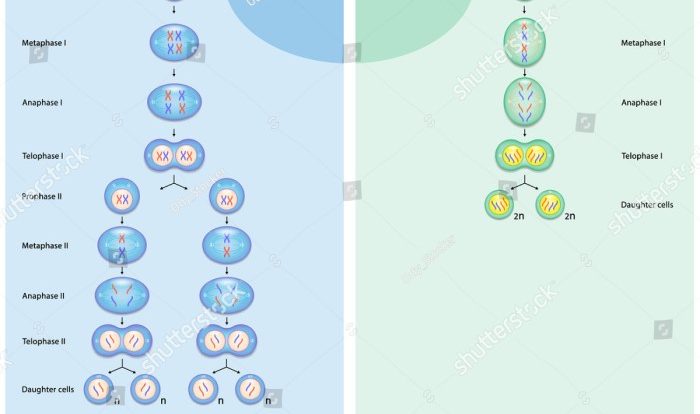Welcome to the Photosynthesis and Cellular Respiration Worksheet, a comprehensive resource designed to provide a thorough understanding of these fundamental biological processes. Dive into the fascinating world of plant life and cellular energy production as we explore the intricate mechanisms that sustain life on Earth.
Throughout this worksheet, you will embark on a journey of discovery, unraveling the secrets of photosynthesis, the process by which plants convert sunlight into energy, and cellular respiration, the mechanism by which cells generate energy from nutrients.
Photosynthesis Overview

Photosynthesis is a vital process by which plants, algae, and some bacteria convert light energy into chemical energy stored in glucose. This process occurs in chloroplasts, specialized organelles within plant cells.
The process of photosynthesis involves several key steps:
- Light Absorption:Chlorophyll, a green pigment, absorbs light energy from the sun.
- Water Splitting:Water molecules are split, releasing oxygen as a byproduct.
- Carbon Dioxide Fixation:Carbon dioxide from the atmosphere is converted into glucose, a sugar molecule.
- Energy Storage:The chemical energy from the sun is stored in the bonds of glucose.
Organisms that perform photosynthesis include plants, algae, and certain bacteria known as cyanobacteria. These organisms are essential for life on Earth as they produce oxygen and provide the foundation of the food chain.
Cellular Respiration Overview
Cellular respiration is a metabolic process by which cells obtain energy from organic molecules, such as glucose. This process occurs in mitochondria, organelles found in the cytoplasm of eukaryotic cells.
Cellular respiration involves several key steps:
- Glycolysis:Glucose is broken down into pyruvate.
- Citric Acid Cycle (Krebs Cycle):Pyruvate is further broken down, releasing carbon dioxide as a byproduct.
- Electron Transport Chain:Electrons from the citric acid cycle are transferred through a series of electron carriers, releasing energy that is used to produce ATP.
Organisms that perform cellular respiration include animals, plants, fungi, and most bacteria. This process is essential for life as it provides cells with the energy they need to function.
Comparison of Photosynthesis and Cellular Respiration: Photosynthesis And Cellular Respiration Worksheet
| Photosynthesis | Cellular Respiration | |
|---|---|---|
| Reactants | Water, carbon dioxide, light energy | Glucose, oxygen |
| Products | Glucose, oxygen | Carbon dioxide, water, ATP |
| Energy Requirements | Light energy | Organic molecules (glucose) |
| Location | Chloroplasts | Mitochondria |
Photosynthesis and cellular respiration are complementary processes. Photosynthesis produces the glucose that is used as fuel for cellular respiration. In turn, cellular respiration releases carbon dioxide, which is used as a reactant in photosynthesis.
Importance of Photosynthesis and Cellular Respiration
Photosynthesis is essential for life on Earth because it:
- Produces oxygen, which is necessary for cellular respiration.
- Provides the foundation of the food chain by producing glucose.
- Regulates the Earth’s climate by absorbing carbon dioxide.
Cellular respiration is essential for life because it:
- Provides cells with the energy they need to function.
- Breaks down organic molecules, releasing carbon dioxide and water as byproducts.
- Regulates the Earth’s climate by releasing carbon dioxide.
Environmental Implications of Photosynthesis and Cellular Respiration
Photosynthesis contributes to the oxygen cycle by releasing oxygen into the atmosphere. This oxygen is essential for the survival of aerobic organisms, including humans and other animals.
Cellular respiration releases carbon dioxide into the atmosphere. This carbon dioxide is used as a reactant in photosynthesis. However, excessive release of carbon dioxide can contribute to climate change.
Human activities, such as deforestation and burning of fossil fuels, can disrupt the balance of photosynthesis and cellular respiration. This can have significant environmental consequences, including climate change, ocean acidification, and loss of biodiversity.
Common Queries
What is the primary pigment involved in photosynthesis?
Chlorophyll
Where does cellular respiration occur in eukaryotic cells?
Mitochondria
What is the net equation for photosynthesis?
6CO2 + 6H2O + light energy → C6H12O6 + 6O2
What is the net equation for cellular respiration?
C6H12O6 + 6O2 → 6CO2 + 6H2O + energy (ATP)
How are photosynthesis and cellular respiration interconnected?
Photosynthesis produces oxygen and glucose, which are used as reactants in cellular respiration. Cellular respiration, in turn, releases carbon dioxide, which is used as a reactant in photosynthesis.
